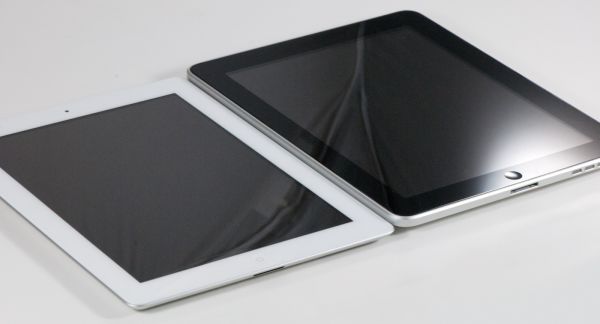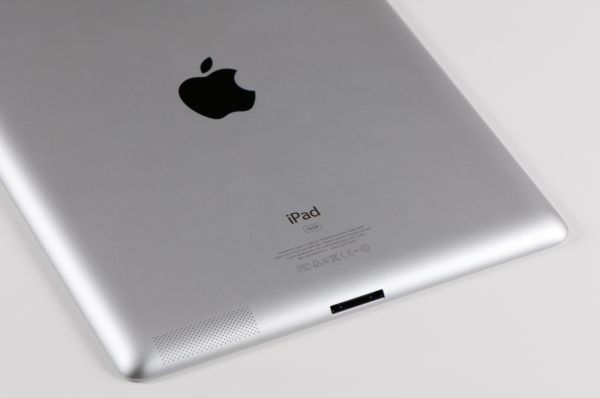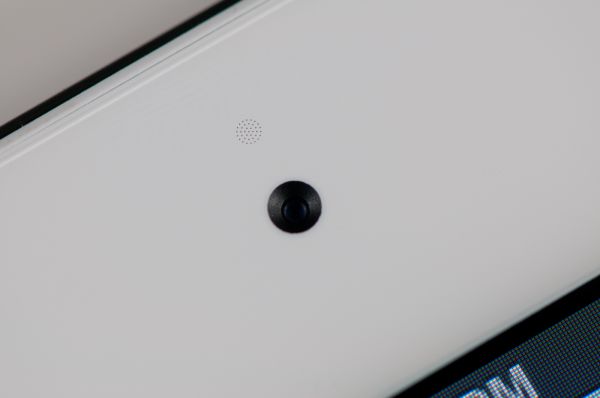Apple iPad 2 Preview
by Anand Lal Shimpi, Brian Klug & Vivek Gowri on March 12, 2011 6:01 AM ESTThe second generation iPad went on sale earlier today, to much fanfare and long, long lines. We're hard at work on our full review of Apple's second generation tablet but there were a few things we wanted to chime in on before too much time passed.
The iPad 2 is a very logical update to the original iPad. The hardware gets an upgrade, with revised industrial design, a slimmer chassis, and Apple's new A5 SoC inside. A5 brings along two Cortex A9 cores, a dual core version of PowerVR's SGX543 graphics chip, and 512MB of memory. Software stays mostly the same but gets some tweaks; the iPad 2 ships with iOS 4.3, which was released earlier this week as an update for the iPhone 4 and original iPad.
The industrial design has changed pretty significantly, from the convex curvature of the original iPad's back to the flat back of the new iPad. Starting with the iPhone 4, Apple has been moving away from the continuous curvature that dominated their handhelds two or three years ago (think iPhone 3G/3G-S, iPod touch 2G/3G, and the 4G/5G iPod nano) and more towards a flatter and more rectangular design language across the board. The iPhone 4 is the only one that's really angular, but the 4th generation iPod touch debuted the same flatness with more ergonomically friendly curves. The iPad 2 basically carries the iPod touch 4G design language on a larger scale.
The iPad 2 is slightly lighter but easier to hold than the previous generation. Laying in bed and reading is probably where the difference becomes most apparent. The gentle curvature running around the edge makes the in-hand feel surprisingly different, as does the considerably thinner profile. I'm actually shocked at how dramatic the difference is.
The downside to the very large radius curvature on the outside is that the dock connector is now awkwardly exposed. It's very similar to how the iPod Touch looks, with about 2 mm of exposed connector visible viewed from the back.
The previous generation dock connector was the subject of constant criticism for being way too tight. Apple has over-corrected with the iPad 2 and now the dock connector is too loose. Just browsing the Apple store, I noted several units whose dock connectors appeared plugged in, but had come just loose enough to not charge.
When connecting 30-pin dock cables, there's not too much resistance holding the cable in place, and the port itself is difficult to locate without flipping the thing over or viewing it from below.
Another welcome change - the return of the white iDevice. After the no-show that was the white iPhone 4, I was pleased to see Apple ship the white-bezeled iPad 2 on time with no production hitches. I was also wrong about how good white would look. Instead of being overwhelming or busy, the white bezel actually has one notable advantage over black - it doesn't show fingerprints or dust. That alone was what constantly drove me crazy about the previous generation - it always looked dirty. Shockingly, white seems to actually make sense.
Other hardware chances are the addition of front and rear facing cameras for FaceTime and taking pictures, but unfortunately, they seem to be pieces lifted from the iPod touch and nothing near the iPhone 4's 5 megapixel shooter. We'll talk about what this means for picture quality overall later on in the preview. The switch on the side can now be configured to either be a device silencer or a rotation lock switch, and there is now a large speaker on the bottom right corner of the device.
Overall, the new design really works - the iPad 2 feels good in hand, and instantly makes its predecessor feel a little clunky. But we didn't just pause our testing to talk about design, there's a lot under the hood of the iPad 2 that demands attention.














82 Comments
View All Comments
erple2 - Tuesday, March 15, 2011 - link
In the iOS case - they're synonymous. You can't get the "new" browser without also getting the new OS update.tipoo - Saturday, March 12, 2011 - link
In addition to software differences, each company also tweaks the design of the Cortex A9 to their liking. After ARM licences it out they can do pretty much whatever to it. So you might see Qualcomm adding cache, Nvidia doubling the bus, or whatever.metafor - Tuesday, March 15, 2011 - link
ARM core licenses do not allow you to modify the CPU design. ARM allows different options when configuring cache size and bus width and co-processors but only with their macro-generator. There's definitely flexibility, but it's not "whatever you want". There are limited flavors if you will of yummy goodness.Anand Lal Shimpi - Saturday, March 12, 2011 - link
While the underlying architecture between those devices may be similar, there are some differences. For example NVIDIA's Tegra 2 only has a single channel 32-bit LPDDR2 memory interface while TI's OMAP 4 has a dual-channel LPDDR2 memory interface.Tegra 2 also lacks an MPE (SIMD engine) while the OMAP 4 doesn't.
Take care,
Anand
tipoo - Saturday, March 12, 2011 - link
I'd be interested in a comparison between all these mobile processors. I understand its difficult since the iPad uses a different OS, but given the numbers where do you think it stands compared to Tegra 2 and the like?zhill - Saturday, March 12, 2011 - link
My understanding is that the ARM Cortex A9 is just an instruction set and architecture specification/chip design. Each company manufactures the actual chips themselves so they can make additional changes at the hardware level such as lithography, voltage, clock frequency, cache sizes etc. So they license the design from ARM, but build the silicon themselves so each design may vary in terms of actual implementation and performance.Software also certainly makes a difference.
winterspan - Saturday, March 12, 2011 - link
you are right to an extent. There are actually two different licenses, a manufacturing license and a "design" license. Basically, if you pay more for the design license, they can make a custom core that implements the ARM Cortex v7 instruction set. This is what Qualcomm does with their Snapdragon. Most of the other guys just have the manufacturing license and this enables mild adjustments, but essentially they all have to use a similar Cortex-A9 core.Not sure what the Apple cores are... Standard Cortex-A9 or something more custom from Intrinsity/Samsung?
jmmx - Sunday, March 13, 2011 - link
"If Apple iPAD 2, NVIDIA's Tegra 2, TI's OMAP 4 and Samsung's Exynos all use the same Dual Core ARM Cortex A9…"There is more to it than this. The simple fact is they do NOT "use the same Cortex A9." They each user their own implementation of the A9. Additionally, A9 is the core cpu design, but the chips are SoC chips "System on a Chip" That is, they contain a lot more than just the A9 CPU but other non CPU functional units as well.The configuration of these units can significantly affect performance.
This is my understanding of the situation. (Caveat - I am a software engineer not hardware.) Someone out there feel free to correct me if I am mistaken about this.
str1ke007 - Saturday, March 12, 2011 - link
Can the ipad2 be tetherd to an iphone ?? (so i can use the 3G data i allready pay for rather then paying for another sim/plan)kmmatney - Saturday, March 12, 2011 - link
There is no reason why you couldn't, and this is what I plan on doing. However I would like to know if the map and GPS apps work well on an iPad without 3G. Do you need to get a 3G for the GPS to work properly?